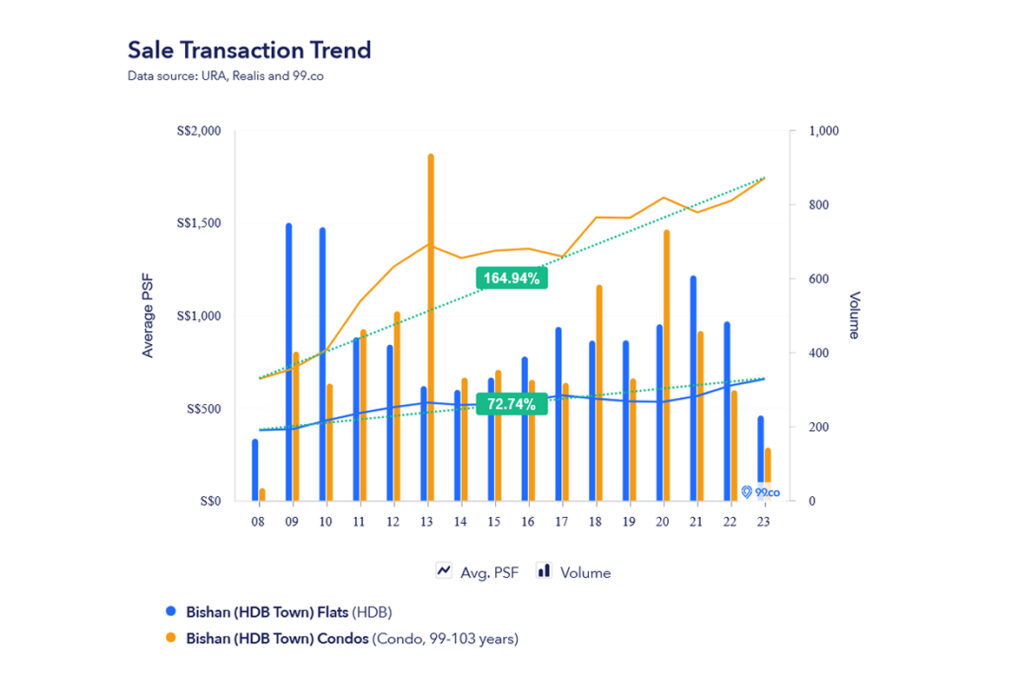The old system of mature and non-mature HDB towns is gone, replaced by a new classification: from now on, HDB flats are classed as Prime, Plus, and Standard. This has significant implications for Singapore’s property market, as well as those who consider their HDB flat as a key asset. While this method of classification is new, there are already some clear implications:
Prime, Plus, and Standard: what’s the difference?

Flats that are under the Prime category are closer to the central areas (e.g., Tanjong Pagar, Tiong Bahru, Rochor, and so forth).
Flats under the Plus category may not be as centralised, but they are situated closer to the key amenities in their neighbourhood. E.g., closer to the MRT, the market and food centre, or the heartland mall.
Standard flats are what we currently have today.
The main differences between Prime and Plus flats, versus Standard flats, are as follows:
- A 10-year Minimum Occupancy Period (this also applies on subsequent buyers)
- A Subsidy Recovery (SR), which must be paid back upon the sale of the flat. The SR will vary based on the specific project, but Prime projects will have a higher SR than Plus projects. The SR applies to the first batch of buyers only.
- No rental of the entire flat, even after the MOP. This applies regardless of nationality (for Standard flats, Singapore Citizens can usually rent out the entire flat after the MOP).
Besides the above, the usual eligibility requirements (e.g., being 35 years old if you’re single, the $14,000 per month income ceiling, and the ethnic quota) all still apply. You can see the HDB eligibility conditions here.
One notable change is that, because there are no more mature or non-mature towns, singles can now apply for new flats in any area (be it Prime, Plus, or Standard). They are, however, still limited to 2-room flats.

The probable impact on the property market
- Price hikes in some flats that precede the new classification
- Mitigation of the windfall effect
- Potential reduction in number of HDB upgraders
1. Price hikes in some flats that precede the new classification
The new Prime and Plus categories will not retroactively apply to existing resale flats. This means HDB hot spots, such as flats in Bishan, Queenstown, and Tiong Bahru, or higher-end projects like DBSS flats or Pinnacle @ Duxton, have escaped the added penalties of Prime and Plus flats.
This is likely to drive investor and home buyer attention toward these older flats, at least in the near to mid to mid-term.
Consider the difference between a Prime project like Ghim Moh Ascent, versus a nearby block (e.g., Block 13 or 13A along Ghim Moh Road). These flats are minutes apart on foot; but Ghim Moh Ascent will come with a 10-year MOP, as well as the SR for the first buyers. The regular blocks along Ghim Moh Road have no such restrictions, and can even be rented out in full after MOP.
As such, it would be unsurprising if buyers flock toward the Standard flats instead, especially if they’re just across the street from Pime or Plus projects.
This is somewhat counterbalanced by the issue of lease decay.
Many of the Standard flats in these desirable areas are quite a bit older; and as they push past the half-way mark in their 99-year lease, buyers may lose enthusiasm for them.
But until this comes to pass, it’s possible that new Plus and Prime restrictions may actually raise resale flat prices, in Standard HDB projects just across from them.
2. Mitigation of the windfall effect
Prime and Plus schemes mitigate the windfall effect, of successfully balloting for a flat near the MRT, near a central region, etc. The 10-year MOP is likely unacceptable to any upgrader. Because MOP begins at the point of key collection, the construction time also must be added. This means someone who ballots for a Prime or Plus flat would wait four to five years for construction, and then 10 more years for the MOP. This is 14 to 15 years before they’re able to upgrade.
If we were to use Bishan as an example, we can see how Bishan flat prices have moved over 15 years, versus leasehold condos in Bishan:

This is just looking at Standard flats. When we consider that Prime and Plus flats also impose a 10-year MOP on subsequent buyers, this could further depress demand for them; and appreciation may turn out to be even lower.
Simply put, HDB upgraders might want to avoid Prime and Plus flats, and leave them to owner-occupiers. Otherwise, they may find the price gap between flats and private housing too huge to bridge, by the time they can upgrade.
On top of this, there’s no way to fully rent out a Prime or Plus unit; so these units are out of the question, for those who want to retain their flats after buying private property.
3. Potential reduction in number of HDB upgraders

This remains to be seen; but if enough Singaporeans are convinced by the quality and location of Prime and Plus flats, we may see fewer upgraders. As mentioned in point 2, these flats are designed to incentivise true owner-occupancy; it’s likely that anyone willing to tolerate a 14 to 15-year wait is intending to live there for a long time, or for the rest of their life.
If you never sell, after all, then a 10-year MOP or the SR rate becomes irrelevant. These buyers may then sit content in their Prime or Plus flats, rather than aiming to step up to private properties.
Granted, this does nothing to help cool runaway prices in the near term (that’s the role of the Additional Buyers Stamp Duty). But it may help to moderate demand a few decades down the road.
For those who see their HDB flat as an asset or stepping stone, Standard may be the way to go
If you’re worried about fast rising condo and landed property prices, then the ideal start point would be a resale flat. These can be sold after five years, with no construction time; and they can be rented out fully after that, if your intent is to retain them.
Otherwise, the cost savings from a BTO flat might make up for the construction time; and a five-year MOP may still be tolerable for upgraders. Either method seems more practical than Prime or Plus flats, for aspiring upgraders.
For more help on the matter, or if you need someone to walk you through the finances involved, reach out to us at Single Digit Millionaire.










